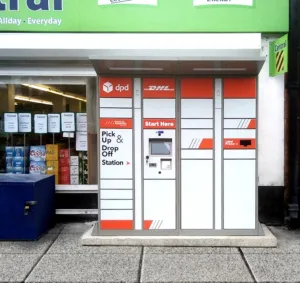by Dr. Stefan Sambol, Partner and Co-Founder, OMMAX
When it comes to digital services, luxury retailers are falling behind. Unlike the wider e-commerce market that has seen rapid, steady growth in recent years, the majority of luxury purchases still happen in person. Luxury customers spend more time inspecting whichever high-value item they are looking to purchase with their own eyes, before subsequently committing to the sale. While the pandemic served as a digital catalyst across all industries, post-lockdown, the luxury market in particular has experienced a major resurgence of in-store shopping. With this uplift, luxury brands might be tempted to decide that the digital side of retailing could be less of a priority for them and more for mid-range retailers instead.
While tempting, this would nevertheless be a mistake. Brands focusing on the in-person experience over the digital experience for luxury B2C sales would be doing so in error. Nearly all luxury brands today have websites processing sales in addition to their primary in-store funnels, however, what many brands fail to recognise is that website traffic is just as, if not more important to overall sales calculations than actual purchases are. This is because of the ‘Research Online, Purchase Offline’ effect, otherwise referred to as the ‘ROPO’ effect. The ROPO effect is the tip of the iceberg when it comes to opportunities in digital marketing for luxury goods, but is a good place for brands to start.
The ROPO Effect
As the name would suggest, the ROPO effect refers to the fact that today’s luxury customers prefer to take the time to thoroughly research the items they are considering purchasing online, before heading to a brand store to buy the product. Unlike other forms of retailing, luxury items are more likely to be seen as long-term investments and, accordingly, customers feel more comfortable with the purchase and engaged with the brand having first taken the time to get to know the product and company online.
As a consequence of this, website traffic is of vital importance to luxury brands. Digital traffic should feature in all end-sales calculations and should factor heavily into marketing considerations, and business goals. By neglecting digital presence, brands neglect a fundamental shift in customer dynamics whereby the pre-sale process has moved away from just personalised in-store sales experiences to being carried out over the internet as well.
Digital Natives and the Importance of Multiple Channels
The average mobile device screen time in the UK last year was over four hours per day as consumers continuously swipe through social media, news, messages, browser research, videos, and more. Marketers have recognised that consumers live much of their lives online these days and the online advertising industry is therefore booming.
The luxury market is not immune to this digital shift, and brands must prioritise online channels or risk losing out on customers. As the population of digital natives grows, luxury brands need to be looking for new ways to innovate and create a digital experience that elevates the luxury market above other brands online. Some luxury retailers have already recognised this, with a few legacy brands like Gucci and Dior investing particularly heavily in engaging customers in digital channels.
Strategies have ranged from Gucci’s recent forays into the metaverse and, last year, Dior successfully presented its Spring/Summer 2023 ready-to-wear show in China through the virtual universe XiRang — a metaverse, Web3 social application. AI is also making headlines in the fashion industry as entire collection concepts can now be designed in moments for public consumption.
Moreover, leveraging digitalisation can mean going beyond classic online channels and into interesting new technologies, like blockchain. Bucherer, for instance, has invested heavily into blockchain authentication through its acquisition of SaaS company Adresta AG in 2022. As imitation pieces remain an ongoing problem for the luxury market, blockchain-based digital authenticity certificates for Bucherer’s luxury watches offer customers quality assurance for both the initial purchase and serve as effective proof of authenticity for maintaining resale value. Accordingly, this investment into new technology now serves as a strong sales point for Bucherer.
Getting Competitive and Becoming Omnichannel
Most importantly, however, the most competitive way to approach day-to-day luxury e-commerce efforts is by merging digital channels into a single omnichannel approach.
Omnichannel digital marketing is the elimination of silos so that digital marketing can happen in concert across multiple online channels. Particularly where heritage brands are concerned, departments have been built out over time and, when new departments are built and added on top, silos can inevitably occur. This can lead to situations where a customer service department, for example, may be entirely independent of the social media team. Similarly, the social media team could be separated fully from the website team. However, as digital natives today increasingly channel-hop on their devices, an aligned digital presence is crucial to optimising return on ad spend (ROAS) and building topline growth through sales.
All customer interactions across all channels must be cohesive and must meet brand standards. Customer service interactions must hit the same tone across all channels, and visual and audio content must align and link directly back to the website and sales cart. Consumers should be able to jump between channels like YouTube, Instagram, Google and the company website itself without ever losing context or brand identity. The way to achieve this is to re-imagine the digital side of the business as one department, breaking down barriers to ensure that customers have an integrated and personalised top-of-class online experience, just as they would have in an in-person luxury store.
Finally, once digital channels have been aligned, luxury brands can turn to their stores as a natural stepping-off point from the online experience. Meaning, online campaigns, colours, branding and tone must remain aligned as customers transition from the online site to the in-person store. This, in turn, allows brands to make the best use of the ROPO effect and builds a natural bridge between the on and offline customer experience. The future is digital, and luxury brands need to make effective changes now or risk falling behind.










